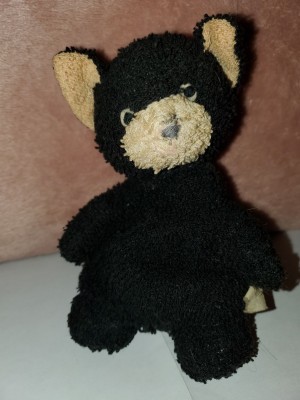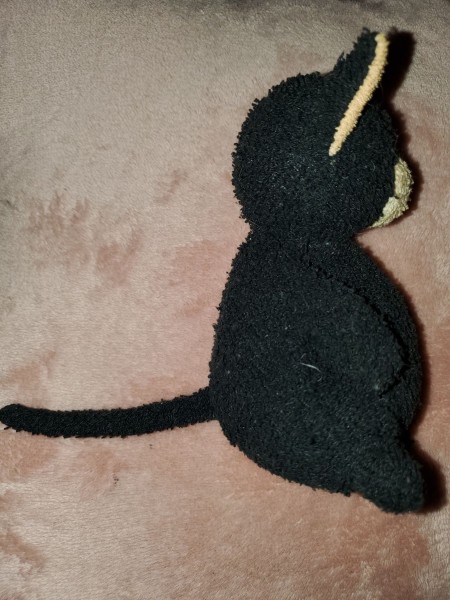 I've been trying to figure out where my stuffed kitty comes from. I found him at a garage sale in about 2007 and have loved him dearly ever since, so much so that any identifying information has completely worn off his tag.
I've been trying to figure out where my stuffed kitty comes from. I found him at a garage sale in about 2007 and have loved him dearly ever since, so much so that any identifying information has completely worn off his tag.
He seems somewhat handmade with his knot eyes and sewn nose but with over a few weeks worth of searching, I'm coming up empty handed. I love this kitty and think it would be amazing to know more about him, if there were others like him, different colors or if the company even exists anymore.
His name is Garage Sale Kitty as I was a child and horrible at naming things but over the years I could never change it.

Add your voice! Click below to answer. ThriftyFun is powered by your wisdom!
This comes up often on this site, and often very hard to place unless someone recognizes the stuffy. There are more eyes on social media sites where you can also place for a info return.
It will be nearly impossible to identify it without a tag.
It will be very difficult to identify the manufacturer without a tag to go by. You might try to find a vintage plush cat @ ebay...but there are approximately 5K results there:
I hope someone can help you find another Yard Sale Kitty but it's kinda like looking for a needle in a haystack.
I do not have a clue and there are thousands of similar Kitties that abound online.
There are several forums that specialize in helping people identify their 'pets' from the past. The members of these groups are very knowledgeable and have helped a lot of people identify their plush animals.
This will be a little trouble but if you really want help, join groups and ask questions. You have good information and pictures so that's a good start. Be sure to provide measurements and a full 'face' picture.
I think that your plush cat's nose was always sewn,
but the eyes were different, like this cat www.worthpoint.com/
The eyes were lost, and an owner of the plush cat made these knots.
This plush stuffed beanie kitten with threaded nose looks a bit like your kitten to me, but it's gray www.ebay.com/
The price is $57.
It will be very difficult to identify your stuffed kitten. I couldn't find anything similar. Try to understand what your toy is made of. This will help you find out the approximate period of manufacture of it.
Ask for help identifying your stuffed kitten in the Toy ID group: www.reddit.com/
Add your voice! Click below to answer. ThriftyFun is powered by your wisdom!